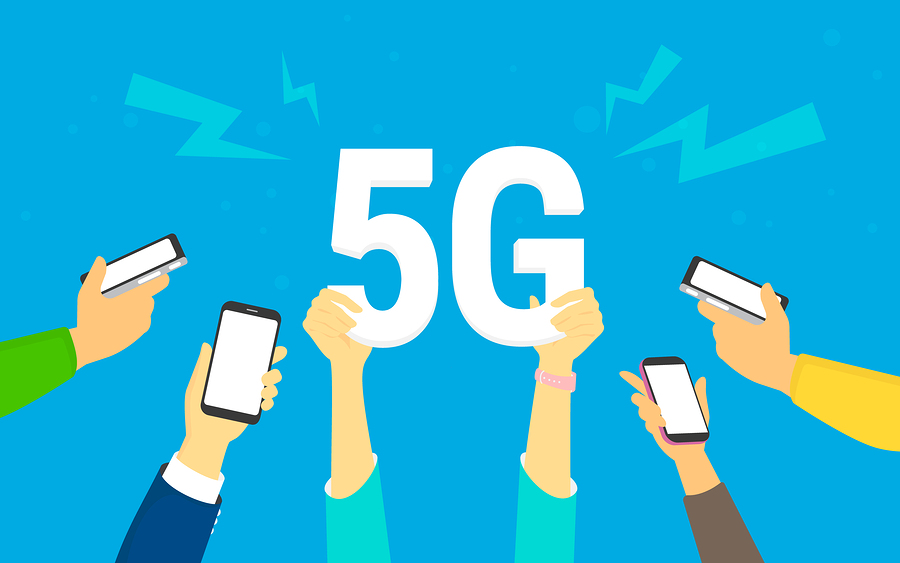The Future Of Networking Is 5G: Businesses Must Prepare Now
How close to reality is 5G, the highly touted next-generation mobile networking infrastructure? Closer than you think.
Many providers are already touting trials of network services that employ limited 5G radio spectrum on top of 4G core networking infrastructure. Real-world applications running on fully implemented 5G networks should start appearing around 2020.
In technology time, that’s not far away. It’s why tech-savvy leaders at large enterprises are working 5G capabilities into their IT roadmaps, especially where cloud computing, Internet of Things (IoT), and machine learning/artificial intelligence fit into the 5G architecture. It’s important to understand 5G’s potential, and where it will intersect with your industry, business model, and processes, sooner rather than later.
Bandwidth Escalation
Until now, bandwidth was networking’s prime mover. We see that in the evolution of the “G’s”: 2G—mobile voice, text; 3G—mobile data, internet apps; 4G—IP telephony, bandwidth-intensive apps such as high-definition video.
5G brings its own bandwidth bonanza—up to 10 gigabits per second per device, according to some estimates. But the 5G transformation is about more than just an adrenalin rush.
First, 5G’s bandwidth expansion is accompanied by a significant reduction in latency. Network delay will be reduced considerably—down to 4 milliseconds, even 1 millisecond in some circumstances.
Most important, 5G technology will redefine network infrastructure through a capability known as network slicing—the ability to offer customized networks for specific uses. Rather than the conventional one-size-fits-all network architecture, where all devices and services share the same pipeline, 5G lets engineers design targeted, application-oriented networks in software on the fly.
This capability lets companies customize networks with a variety of devices and services, whether cell phones, IoT sensors, or enterprise applications. Service providers can personalize their networks for smart homes, smart worksites, or entire smart cities, incorporating the bandwidth, security, or latency required for each. Overall, it will provide better service quality and a better network experience for both developers and users.
Value Proposition
The network operator business model has stayed pretty much the same during the last century: Service providers build out the infrastructure, and customers sign on to use their pipes. 5G promises to upend that model, both its economics and in the way services are deployed.
5G’s software-based network-slicing capability will make for an infrastructure that is very fluid, dynamic, and flexible. It will help create a marketplace of virtual networks, so expect to see targeted use-case networks popping up worldwide.
We’re already starting to see entrepreneurs setting up 5G-based private networks. These startups might use their own radio infrastructure, maybe in the unlicensed spectrum, or they might use partners’ radio networks and simply provide services over their own private network slices. Look for some cloud computing service providers to offer 5G-based virtual private networks.
The same opportunity exists for large enterprises. You’ll see some big companies build out their own 5G network slices, likely employing infrastructure from service providers. For instance, a manufacturer might implement a fixed broadband wireless 5G network in a factory where the company is expanding its use of IoT. The IoT devices will communicate within the factory over the broadband wireless network created by the manufacturer to its own specifications, which will connect to a third-party network for wider communications across the enterprise.
What’s Being Done?
IT vendors of all kinds, including Oracle, are investing in 5G-related technology to support next-generation consumer and business applications.
For example, 5G’s extremely low latency will support applications that demand near-real-time and highly reliable data communications, such as autonomous vehicles and at-home healthcare services. 5G’s network-slicing capability lends itself to creating localized high-bandwidth networks, a perfect fit for sophisticated “smart home” security/appliance/entertainment services, as well as for construction, engineering, and other asset-intensive applications. 5G’s expansive bandwidth will support use cases like the complicated configurations and heavy network traffic necessary to enable the smart cities of the future.
Cloud computing intersects with 5G in several ways. Many IoT systems are cloud-based, for example, and 5G’s expanded data capacity and lower latency will support a proliferation of IoT devices and applications. Cloud-based analytics tools, employing machine-learning algorithms, can glean actionable insights from the data that the network’s control plane generates, such as subscriber location information and network traffic patterns.
From Here to 5G
Between now and 2020, a few things must still happen:
The industry must complete the entire set of 5G standards. Even though most of the radio standards are defined, we have about another year of work on the core network standards.
Expect to see both established service providers and startups, even some large enterprises, roll out localized wireless 5G networks during the next year. They will use slight modifications of the 4G core but take advantage of the current patchwork of 5G radio spectrum. Network trials and proof-of-concept applications will represent the bulk of those efforts.
The real 5G core, with full network-slicing capability, will start to show up in large-scale production networks around 2020.
Understanding 5G and its implications should be high on your company’s priority list. How will setting up a private 5G network slice improve your company’s critical applications, services, and security processes? Could new network services open up revenue-generating opportunities? And what’s your best strategy for leveraging that capability—service provider or DIY?
Before you know it, full-throttle 5G wireless networks will be here—so be prepared.
Article written by: Doug Suriano
0

